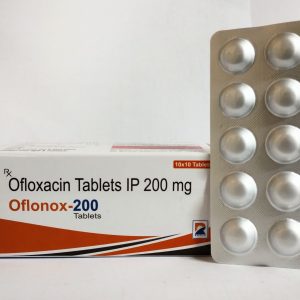DESCRIPTION
Aceclofenac is a non-steroidal anti-inflammatory drug (NSAID) with marked anti-inflammatory and analgesic properties. It is reported to have a higher anti-inflammatory action or at least comparable effects than conventional NSAIDs in double-blind studies [A19667, A19668, A19670]. Aceclofenac potently inhibits the cyclo-oxygenase enzyme (COX) that is involved in the synthesis of prostaglandins, which are inflammatory mediators that cause pain, swelling, inflammation, and fever. It is orally administered for the relief of pain and inflammation in osteoarthritis, rheumatoid arthritis and ankylosing spondylitis. Aceclofenac belongs to BCS Class II as it possesses poor aqueous solubility [A19667]. It displays high permeability to penetrate into synovial joints where in patients with osteoarthritis and related conditions, the loss of articular cartilage in the area causes joint pain, tenderness, stiffness, crepitus, and local inflammation [A19666]. Aceclofenac is also reported to be effective in other painful conditions such as dental and gynaecological conditions [A19672]. In 1991, aceclofenac was developed as an analog of a commonly prescribed NSAID, [DB00586], via chemical modification in effort to improve the gastrointestinal tolerability of the drug. It is a more commonly prescribed drug in Europe.
Propacetamol: Acetaminophen, also known as paracetamol, is commonly used for its analgesic and antipyretic effects. Its therapeutic effects are similar to salicylates, but it lacks anti-inflammatory, antiplatelet, and gastric ulcerative effects.
SIDE EFFECTS
Aceclofenac
Some common adverse effects include gastro-intestinal disorders (dyspepsia, abdominal pain, nausea), rash, ruber, urticaria, symptoms of enuresis, headache, dizziness, and drowsiness [L869]. Oral LD50 value in rats is 130 mg/kg [MSDS].
Paracetamol
Oral, mouse: LD50 = 338 mg/kg; Oral, rat: LD50 = 1944 mg/kg. Acetaminophen is metabolized primarily in the liver, where most of it is converted to inactive compounds by conjugation with glucuronic acid and, to a lesser extent, sulfuric acid. Conjugates are then excreted by the kidneys. Only a small portion is excreted in unchanged in urine or oxidized via the hepatic cytochrome P450 enzyme system (CYP2E1). Metabolism via CYP2E1 produces a toxic metabolite, N-acetyl-p-benzoquinoneimine (NAPQI). The toxic effects of acetaminophen are due to NAPQI, not acetaminophen itself nor any of the major metabolites. At therapeutic doses, NAPQI reacts with the sulfhydryl group of glutathione to produce a non-toxic conjugate that is excreted by the kidneys. High doses of acetaminophen may cause glutathione depletion, accumulation of NAPQI and hepatic necrosis. The maximum daily dose of acetaminophen is 4 g. Liver failure has been observed at doses as low as 6 g per day. As such, the maximum daily and single dose of acetaminophen is currently being reviewed in some countries. N-acetyl-cysteine, a precursor of glutathione, may be administered in the event of acetaminophen toxicity.
INDICATION
Aceclofenac
Indicated for the relief of pain and inflammation in osteoarthritis, rheumatoid arthritis and ankylosing spondylitis.
Paracetamol
For temporary relief of pain.





